12 Plants That Press the Snooze Button
- gardencenter
- Feb 16, 2024
- 5 min read
Updated: Feb 29, 2024

A long winter has come and gone, and things are looking on the bright side. The sun is out and the nighttime temperatures are still cool, but certainly warmer than they were. Garden plans for the new year are big and exciting. Last season you probably purchased some of your favorite shrubs or perennials, decided on just the right placement, and got everything in the ground. The grass is growing, daffodils and forsythia have come and gone…… and some of your plants aren’t doing anything. What do you do? Should you tear them out in a fit of rage? Call the garden center and demand your money back? Don’t panic. If your sleepy shrubs and drowsy perennials are some of these twelve (but not limited to these, of course).. all may still be well.
Many plants wait until the temperatures at night are consistently 50 degrees Fahrenheit or above to start their figurative day. It may be well into May or even June before some plants really get a move on.
Five Shrubs Worth Waiting On
Butterfly bush is our number one worst offender for being really late to wake up. It’s entirely common in our region for Buddleia to die back hard in the winter. The best thing you can do to encourage its survival through the winter is to plant it in a place that drains really well. They hate being wet and cold for long periods of time. If you’ve got that covered, then you can try the next method, which is…well, covering them. It may benefit Buddleia to be insulated with burlap or to secure straw or leaves packed around their branches to keep them cozy through the winter. This isn’t a necessity, but it might help them die back less and wake up sooner. I always recommend to keep the pruners in the tool shed until you start to see leaves in the spring or summer. Many homeowners like to cut everything back in the autumn for a tidier look through the winter, but you may be doing more harm than good. Shrubs that have a tendency to have stem dieback will do better if they have more leeway to do so. If dieback happens all the way to the ground on a shrub that has little branching structure, then the chances of survival are less. That being said, fear not. Buddleia can very commonly grow back from the lowest parts of the plant and will rapidly make foliage when the weather gets hot. Some fertilizer with a higher nitrogen number will encourage leafy growth. A follow-up fertilization with a higher middle number (Phosphorus) in the N-P-K listing will encourage flower production.
Our number two most notorious shrub that can take a good while to get going is Bigleaf Hydrangea. Just like butterfly bush, it is very common for these beauties to die back significantly and then re-grow from the ground. The same pruning advice applies, except Hydrangea macrophylla blooms on old growth. On older varieties, this means winter dieback results in little to no flowers the next year. The insulation advice from above is a good idea for Bigleaf Hydrangea. Place four stakes around the shrub, surround it in a burlap screen, and pack with leaves or straw. You can also get around the no flowering problem by using newer cultivars that bloom on old and new growth. If the above ground branches die, the new growth that appears at the ground will produce flowers mid-summer through frost.
Buttonbush, Cephalanthus occidentalis, is another shrub late to emerge. We’re down the home stretch of May, and my two buttonbush are just starting to look like they’re alive. All the information above applies to these plants too, except they typically don’t die back so hard. The wait is worth it, because the little round summer blooms are great for pollinators, and the autumn color is typically excellent.
Clethra alnifolia, or Sweet Pepperbush, comes in at #4. My pink-flowered ‘Ruby Spice’ is even further behind the buttonbush, but tiny leaves are poking through more and more every day. Like buttonbush, stem dieback isn’t usually a huge problem with these, they just wake up very late. Most cultivars have white flowers, and the shrub itself generally grows to 3-5’ high and wide. It’s a pollinator magnet with a scent to die for, and the autumn color is one of the best golds you’ll find in the shrub world.
Our number five pick is Rose of Sharon, Hibiscus syriacus. Some folks call this shrub Althea, and it’s an old favorite that appears in many gardens. Rose of Sharon is extraordinarily easy to grow, but like the others, it doesn’t like to make leaves until it’s warm at night. Most old varieties are various shades of pink and white, but growers have released newer ones with lovely blue flowers or variegated foliage.
Perennial Sleepers
Speaking of hibiscus, the most tardy of all these plants might be perennial hibiscus. Otherwise known as Rose Mallow, these giant perennials don’t even begin to show themselves until the weather gets quite warm. Once they get going though, they explode. Giant leaves are a backdrop for even more giant flowers. Reaching upwards of five feet, these plants look like they belong in the Wizard of Oz. They’re also a great choice for really damp, poorly drained areas.
Two of our favorite perennials for pollinators round out numbers two and three in this section. Milkweed and Joe Pye Weed are tremendous for butterflies and other insects, but might not appear for a while. Be patient though, these are hardy and reliable perennials.
Ferns and ornamental grasses finish off our list of slowpokes. Cool season grasses like Calamagrostis will start going earlier, but your other favorites like Miscanthus, Panicums, and Pennisetums just won’t grow until our nights get pretty warm. They’ll catch up pretty quickly though. Ferns are very much the same case. Even a long-time gardener like myself can’t help but get impatient and worrisome waiting on these two. It’s a good feeling though when new growth starts to poke up from the ground in the form of rounded fiddleheads or pointed shards of grass.
Pennisetum alopecuroide ‘Hameln’
In addition to these garden favorites, many trees are also slow to break dormancy. Beech and Paperbark Maple are two of the slowest in my garden. Hickory, Walnut, and Ash may also be slow. When in doubt, scratch a stem or branch with your fingernail or a knife and look for green wood underneath the outer bark. Living branches will also usually be flexible, whereas dead branches will be brittle and brown when you scratch them. If the signs look good, patience is key. Summer is close at hand so things should be starting to look alive very soon!


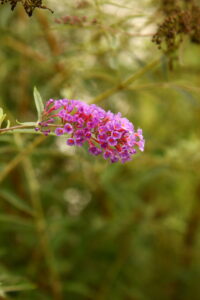
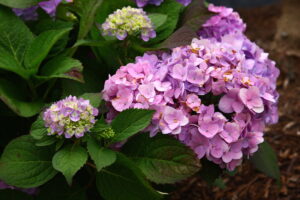

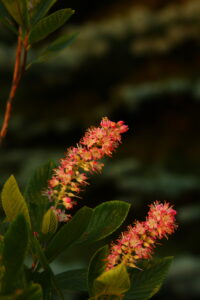
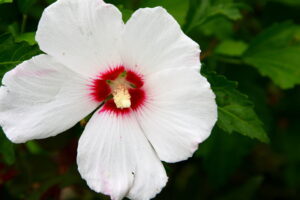
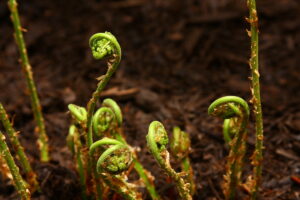
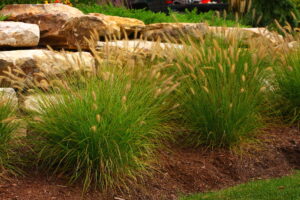



Comments